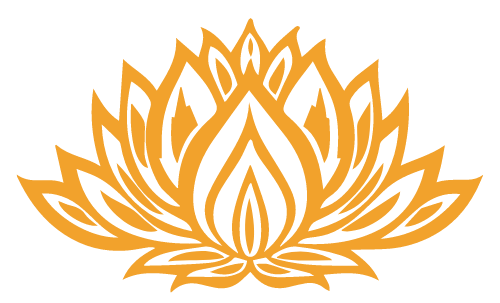DEATHWALKER'S GUIDE TO LIFE SEASON 3
EPISODE 7
All the Living and the Dead: A personal investigation into the death trade
Photo by Ben Schumin, a professional photographer who captures the intricacies of daily life.
SEPTEMBER 23 & 30, 2023
EPISODE 7
All the Living and the Dead
Death in Print: All The Living And The Dead by Hayley Campbell, Meet: Author and broadcaster Hayley Campbell, Death on Screen: Q&A with Hayley Campbell
In this special episode of Deathwalker’s Guide to Life, Kerry Sunderland speaks with UK-based author, broadcaster, and journalist Hayley Campbell about her stunning 2022 book, All the Living and the Dead: A personal investigation into the death trade. This conversation, which will be presented in two parts, was recorded live at Byron Writers Festival 2023.
Listen to Episode 7 on the following podcast platforms
Or, if you've already listened to the show, scroll down for more info and links . . .
DEATH IN PRINT
All the Living and the Dead: A personal investigation into the death trade




Journalist and author Hayley Campbell's childhood fascination with death 'began with five dead women' (when she was young child, her father, comic book artist Eddie Campbell, was illustrating a graphic novel titled From Hell, about Jack the Ripper).
In the opening pages of All the Living and the Dead, Hayley observes that we aren't born knowing we will die. She writes: "Some people remember being told: they have a moment they can pinpoint where life cleaved into before and after. Maybe death came to you in the form of a goldfish or a grandparent.’" (This was me – my first grandparent died when I was about three, and I have vivid memories of coming home, age about seven, to learn that Mum had flushed by dead pet goldfish down the toilet.)
Unlike me, Hayley can’t remember a time before death existed but until she meets funeral director Poppy Mardall at a conference when she's in her 30s, she hasn't yet seen a dead human body. Then Mardall tells her, "The first dead body you see should not be someone you love."
Hayley takes her advice and gets in contact with Mardall. Understandably, Mardall isn't willing to just show her one of the corpses in her care (as she says, "it's not like a museum"), but she suggests that Hayley help get someone ready for their funeral. Hayley accepts the challenge and discover being with the dead is "real and meaningful, like I would be missing something crucial if I put any of it on mute."
This realisation sets her off on a search for answers to the following questions: What can be gained by becoming familiar with death? Is there such a thing as closure and how important is the presence of the body in this process? Why are we so squeamish, as a society, about dead bodies? How can we best support the bereaved?
All the Living and the Dead is a deep dive into the death industry, jam packed with profiles of those who make a living working with the dead, from bereavement midwives to a former executioner who is responsible for ending 62 lives, from grave diggers to crematorium operators, and every one in between and even beyond, with the final chapter exploring those who sign up to put themselves on ice in the hope that one day science may able to bring them back to life.
The majority of death workers Hayley interviews are those at the "industrial end of death: the part where all the ceremony and courtesy of dealing with the living has passed." Nevertheless, her profiles are very human stories, exploring why those who work in the death trade have chosen their profession and how they cope with the emotional impact of their work.
And while this book is a collection of essays about people who work in the death trade, it is Hayley's own journey of discovery - as both a spectator and, at times, a participant - that gives the book its propulsive narrative arc.
From the beginning, I was curious: What role did her early awareness of death play in the making of this book and did it adequately prepare the author for what she was about to discover, as she stood, again and again, at the intersection of wonder and fear? I discovered it gave her immense curiosity and great empathy - not to mention the stamina of a wildebeest. Years of her life went into the writing of this book (and, she jokes, turned her hair grey).
Hayley's microscopic examination of the realities of death - blissfully euphemism-free - essentially becomes an exploration of what makes us human. As she writes, "Death shows us what is buried in the living. By shielding ourselves from what happens past the moment of death, we deny ourselves a deeper understanding of who we truly are."
In the opening pages of All the Living and the Dead, Hayley observes that we aren't born knowing we will die. She writes: "Some people remember being told: they have a moment they can pinpoint where life cleaved into before and after. Maybe death came to you in the form of a goldfish or a grandparent.’" (This was me – my first grandparent died when I was about three, and I have vivid memories of coming home, age about seven, to learn that Mum had flushed by dead pet goldfish down the toilet.)
Unlike me, Hayley can’t remember a time before death existed but until she meets funeral director Poppy Mardall at a conference when she's in her 30s, she hasn't yet seen a dead human body. Then Mardall tells her, "The first dead body you see should not be someone you love."
Hayley takes her advice and gets in contact with Mardall. Understandably, Mardall isn't willing to just show her one of the corpses in her care (as she says, "it's not like a museum"), but she suggests that Hayley help get someone ready for their funeral. Hayley accepts the challenge and discover being with the dead is "real and meaningful, like I would be missing something crucial if I put any of it on mute."
This realisation sets her off on a search for answers to the following questions: What can be gained by becoming familiar with death? Is there such a thing as closure and how important is the presence of the body in this process? Why are we so squeamish, as a society, about dead bodies? How can we best support the bereaved?
All the Living and the Dead is a deep dive into the death industry, jam packed with profiles of those who make a living working with the dead, from bereavement midwives to a former executioner who is responsible for ending 62 lives, from grave diggers to crematorium operators, and every one in between and even beyond, with the final chapter exploring those who sign up to put themselves on ice in the hope that one day science may able to bring them back to life.
The majority of death workers Hayley interviews are those at the "industrial end of death: the part where all the ceremony and courtesy of dealing with the living has passed." Nevertheless, her profiles are very human stories, exploring why those who work in the death trade have chosen their profession and how they cope with the emotional impact of their work.
And while this book is a collection of essays about people who work in the death trade, it is Hayley's own journey of discovery - as both a spectator and, at times, a participant - that gives the book its propulsive narrative arc.
From the beginning, I was curious: What role did her early awareness of death play in the making of this book and did it adequately prepare the author for what she was about to discover, as she stood, again and again, at the intersection of wonder and fear? I discovered it gave her immense curiosity and great empathy - not to mention the stamina of a wildebeest. Years of her life went into the writing of this book (and, she jokes, turned her hair grey).
Hayley's microscopic examination of the realities of death - blissfully euphemism-free - essentially becomes an exploration of what makes us human. As she writes, "Death shows us what is buried in the living. By shielding ourselves from what happens past the moment of death, we deny ourselves a deeper understanding of who we truly are."
FIND OUT MORE ABOUT ALL THE LIVING AND THE DEAD
Find out more about the book
Buy All the Living and the Dead
Read the New York Times review of the book
Find out more about the book
Buy All the Living and the Dead
Read the New York Times review of the book
'We are squeamish, as a society, about dead bodies; we’re conditioned to be apart from them. We construct them in our imaginations, stacking them up to all the heights of horror our minds are capable of.'
- Hayley Campbell
- Hayley Campbell
KŌRERO / CONVERSATION
Meet Hayley Campbell

Above: Hayley Campbell, during research for a story published on Buzzfeed [see link below]
Hayley Campbell is an author, journalist and broadcaster who travels the world to report on everything from type faces to film stars.
She writes for WIRED, BuzzFeed, The Guardian, GQ, Esquire, Empire, VICE, FIGHTLAND, New Statesman, McSweeney’s, The Comics Journal, hosts the Unpopped podcast for the BBC and Must Watch on BBC Radio 5 Live.
Her first book, The Art of Neil Gaiman, tells the full story of the bestselling and critically acclaimed author's amazing creative life. It features never-before-seen manuscripts, notes, cartoons, drawings, and personal photographs from Neil’s own archive, which are complemented by artwork and sketches from all of his major works and his own intimate recollections. Each project is examined in turn, from genesis to fruition, and positioned in the wider narrative of Gaiman’s creative life, affording unparalleled access to the inner workings of the writer’s mind.
Her latest book, All the Living and the Dead, was published in 2022.
Hayley is now based in London, although she spent much of her childhood and youth in Brisbane, where she developed an early fascination with death and dying. Unlike other people, who remember being told they will die - "they have a moment they can pinpoint where life cleaved into before and after" - Hayley can’t remember a time before death existed.
For her, "Death was just there, everywhere, always."
This special two-part episode of Deathwalker's Guide features an in-depth conversation with Hayley, recorded live at the 2023 Byron Writers Festival on 13 August 2023. (Big thanks to the BWF team for permission to use the audio!)
She writes for WIRED, BuzzFeed, The Guardian, GQ, Esquire, Empire, VICE, FIGHTLAND, New Statesman, McSweeney’s, The Comics Journal, hosts the Unpopped podcast for the BBC and Must Watch on BBC Radio 5 Live.
Her first book, The Art of Neil Gaiman, tells the full story of the bestselling and critically acclaimed author's amazing creative life. It features never-before-seen manuscripts, notes, cartoons, drawings, and personal photographs from Neil’s own archive, which are complemented by artwork and sketches from all of his major works and his own intimate recollections. Each project is examined in turn, from genesis to fruition, and positioned in the wider narrative of Gaiman’s creative life, affording unparalleled access to the inner workings of the writer’s mind.
Her latest book, All the Living and the Dead, was published in 2022.
Hayley is now based in London, although she spent much of her childhood and youth in Brisbane, where she developed an early fascination with death and dying. Unlike other people, who remember being told they will die - "they have a moment they can pinpoint where life cleaved into before and after" - Hayley can’t remember a time before death existed.
For her, "Death was just there, everywhere, always."
This special two-part episode of Deathwalker's Guide features an in-depth conversation with Hayley, recorded live at the 2023 Byron Writers Festival on 13 August 2023. (Big thanks to the BWF team for permission to use the audio!)
'There is urgent, life-changing knowledge to be gained from becoming familiar with death, and from not letting your limits be guided by a fear of unknown things: the knowledge that you can stand to be near it, so that when the time comes you will not let someone you love die alone .'
- Hayley Campbell
- Hayley Campbell
DEATH ON SCREEN
Book promo
Since this special two-part episode features an hour-long conversation with Hayley Campbell, the broadcast doesn't include the second bookend, Death in Print. But here's a short video featuring the star of the show, Hayley Campbell.
All the Living and the Dead
Q&A with Hayley Campbell
Catch up on previous episodes
Deathwalker's Guide to Life kicked off in 2021. Catch up by browsing past episodes, which you can listen to on all the major podcast platforms.






